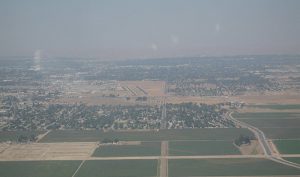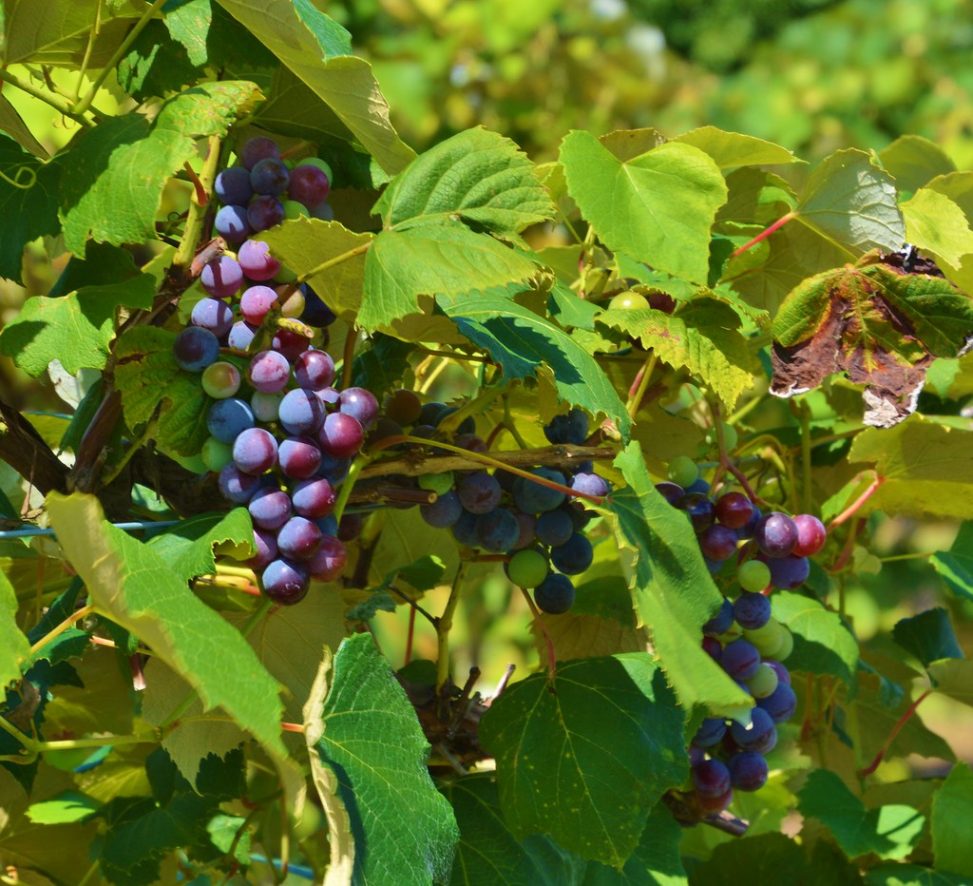Driving from Los Angeles to California’s central valley is rarely as picturesque as it should be. There is a point where the highway emerges from the Tejon Pass and you can look down at the valley spread out before you. Except most the of the valley is hardly ever visible due to a stubborn film of haze. Part of this haze is ozone, which is created when nitrogen oxides react with volatile organic compounds in the presence of sunlight. Ozone not only ruins what could be a stunning panorama, but as a recent study points out, it also harms plants and their ability to photosynthesize. Ozone damage is an especially important issue in California, a state that in 2015 produced an agricultural output worth nearly 6 billion dollars. Taking this into account, a recent study conducted by researchers from California, Colorado, and Massachusetts has examined both the historical and projected future impacts of ozone and climate change on some of California’s major perennial crops.

California’s central valley suffers from high levels of air pollution, including ozone. Photo courtesy of University of California
The study first looked at the yield responses of perennial crops to ambient ozone and climate warming of 2 degrees Celcius from 1980 to 2015. Many of the crops examined are the most valuable in the state, including wine grapes, strawberries, table grapes, walnuts, hay, lemons, freestone peaches, nectarines, almonds, and plums. Researchers found that although the effects of warming were not significant, seven out of these ten crops showed significant negative yield responses to ozone, with yields dropping 2 to 22%. This was estimated to translate to a loss of about a 1 billion dollars per year. After analyzing historical trends in ozone levels and climate in relation to crop yields, it was found that crops yield damage has lessened as ambient ozone has decreased, although recent damage has still been notable. The good news is that future projections showed significant increases in crop yields if ozone levels continue to fall, with table grapes predicted to have up to a 20% net yield increase. The takeaway from this study seems to be generally positive. If we can continue to decrease the amount of air pollution we produce, it looks like we’ll see our efforts greatly rewarded.
Study:
Hong, C., Mueller, N.D., Burney, J.A. et al. Impacts of ozone and climate change on yields of perennial crops in California. Nat Food 1, 166–172 (2020). https://doi.org/10.1038/s43016-020-0043-8

Sherzilla
This is a great article! I would really love to hear how exactly ozone harms the ability of plants to photosynthesize.
Alex
This is really interesting! The fact that crops and plants are damaged is devastating but I’m glad that it is turning around! One thing that intrigued me were the wine grape crops, losing vines would be devastating of course, but I wonder if the grapes that do survive are changed? If so, how that may affect wine that is made. I don’t know how drastic grape changes would have to be, but I thought it might be an interesting ripple effect to look into.